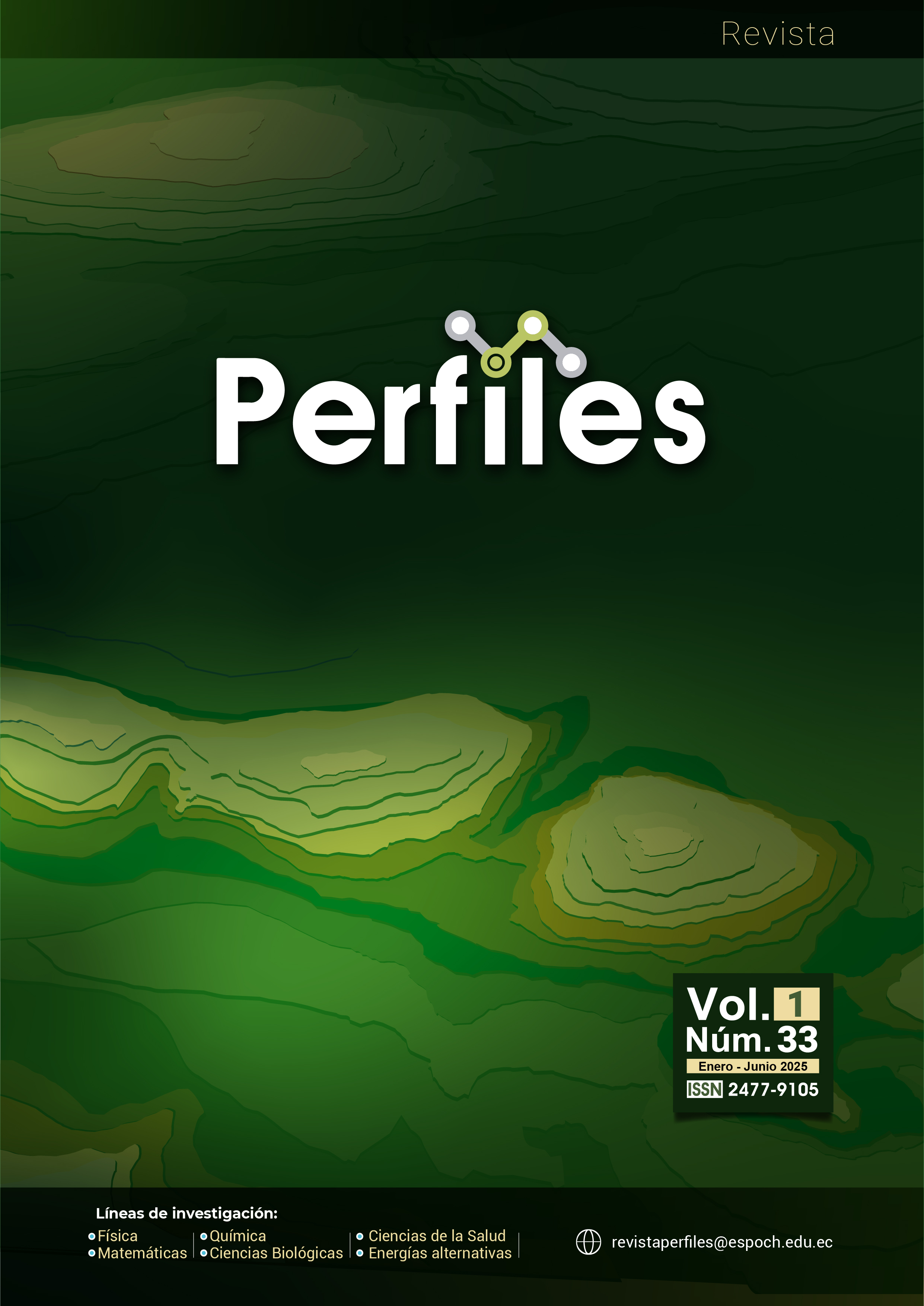Manufacture of Hemp-based cutlery from the Woody Core of Industrial Hemp Plant (Cannabis sativa L.)
DOI:
https://doi.org/10.47187/perf.v1i33.321Keywords:
Industrial Hemp, Pressing, Composite Material, Mechanical Properties, Physical Properties, Hemp-based cutleryAbstract
Industrial hemp has gained popularity for its carbon sequestration capacity, increased biomass production and diversity of end products. The objective of this study was to develop a new composite material or agglomerate based on dry stalk shavings of industrial hemp (Cannabis sativa L.) as filler material and a binder made up of vegetable proteins. In addition, impact and tensile strength tests were carried out, together with the evaluation of physical properties such as water absorption, swelling degree and apparent density. The manufacturing process of the hemp agglomerate was based on the production of agglomerated boards, considering important process parameters such as particle size of the filler material, binders, composition, temperature and curing pressure. The resulting physical and mechanical properties data were analyzed by multifactorial analysis of variance and multiple range test to determine which factors (hemp variety, particle size and binder) have an effect on both physical and mechanical properties. The results show that particle size and binder type have a significant impact on the properties of hemp agglomerates, which stand out as an alternative material in the manufacture of plastic coatings.
Downloads
References
Alam MM, Maniruzzaman M, Morshed MM. Application and advances in microprocessing of natural fiber (jute)–based composites. In: Hashmi S, Batalha GF, Van Tyne CJ, Yilbas BBTCMP, editors. Comprehensive materials processing [Internet]. Oxford: Elsevier; 2014. p. 243–60. Available from: https://www.sciencedirect.com/science/article/pii/B9780080965321007147
Kaushalya RANC, Dhanushka MKDT, Samarasekara AMPB, Weragoda VSC. Development of biodegradable packaging materials using polylactic acid (PLA) and locally extracted starch. In: 2019 Moratuwa Engineering Research Conference (MERCon) [Internet]. IEEE; 2019. p. 610–5. Available from: https://ieeexplore.ieee.org/document/8818917/
Choeybundit W, Shiekh KA, Rachtanapun P, Tongdeesoontorn W. Fabrication of edible and biodegradable cutlery from morning glory (Ipomoea aquatic) stem fiber-reinforced onto soy protein isolate. Heliyon [Internet]. 2022;8(5):e09529. Available from: https://doi.org/10.1016/j.heliyon.2022.e09529
Olatunde OO, Singh A, Shiekh KA, Nuthong P, Benjakul S. Effect of high‐voltage cold plasma on oxidation, physicochemical, and gelling properties of myofibrillar protein isolate from Asian sea bass (Lates calcarifer). Foods [Internet]. 2021 Feb 4;10(2):326. Available from: https://www.mdpi.com/2304-8158/10/2/326
Felix M, Perez-Puyana V, Romero A, Guerrero A. Production and characterization of bioplastics obtained by injection moulding of various protein systems. J Polym Environ [Internet]. 2017;25(1):91–100. Available from: https://doi.org/10.1007/s10924-016-0790-7
Echeverría I, Eisenberg P, Mauri AN. Nanocomposite films based on soy proteins and montmorillonite processed by casting. J Memb Sci [Internet]. 2014;449:15–26. Available from: https://www.sciencedirect.com/science/article/pii/S0376738813006492
Zvirgzds K, Kirilovs E, Kukle S, Gross U. Production of particleboard using various particle-size hemp shives as filler. Materials (Basel) [Internet]. 2022 Jan 24;15(3):886. Available from: https://www.mdpi.com/1996-1944/15/3/886
Arehart JH, Nelson WS, Srubar WV. On the theoretical carbon storage and carbon sequestration potential of hempcrete. J Clean Prod [Internet]. 2020;266:121846. Available from: https://www.sciencedirect.com/science/article/pii/S095965262031893X
Matango Proaño F. Evaluación de tres variedades de cáñamo (Cannabis sativa var. sativa) bajo tres densidades de siembra para la obtención de fibra [tesis de licenciatura] [Internet]. Quito (EC): Pontificia Universidad Católica del Ecuador; 2005. Available from: http://repositorio.iniap.gob.ec/jspui/handle/41000/536
Saenghirunwattana P, Noomhorm A, Rungsardthong V. Mechanical properties of soy protein-based “green” composites reinforced with surface-modified cornhusk fiber. Ind Crops Prod [Internet]. 2014;60:144–50. Available from: https://www.sciencedirect.com/science/article/pii/S0926669014003434
Mishchenko S, Mokher Y, Laiko I, Burbulis N, Kyrychenko H, Dudukova S. Phenological growth stages of hemp (Cannabis sativa L.): codification and description according to the BBCH scale. Žemės ūkio Moksl. 2017 Jul 25;24.
Istek A, Aydin U, Özlüsoylu B. The effect of chip size on the particleboard properties. In: International Congress on Engineering and Life Science [Internet]. Kastamonu, Turkey; 2018. p. 439–44. Available from: https://www.researchgate.net/publication/329674033
Sun XS. Thermal and mechanical properties of soy proteins. In: Sun XS, Wool R, editors. Bio-based polymers and composites [Internet]. Elsevier; 2005. p. 292–326. Available from: https://doi.org/10.1016/B978-012763952-9/50010-1
Snijder M, Keijsers E, Mulder W, Schennink G, Van D, Wevers M. Biotrem: process and product innovations of bran-based material [Internet]. Wageningen: ATO-DLO; 2003. 57 p. Available from: https://edepot.wur.nl/476145
ASTM. ASTM D570-98 (Reapproved 2010). Standard test method for water absorption of plastics (Technical Standard) [Internet]. West Conshohocken, PA: ASTM International; 2010. p. 25–8. Available from: http://www.astm.org/cgi-bin/resolver.cgi?D570-98R10E1
Gamero S, Jiménez-Rosado M, Romero A, Bengoechea C, Guerrero A. Reinforcement of soy protein-based bioplastics through addition of lignocellulose and injection molding processing conditions. J Polym Environ [Internet]. 2019. Available from: https://doi.org/10.1007/s10924-019-01430-1
International Organization for Standardization. ISO 9427:2003 Wood-based panels—determination of density (Technical Standard) [Internet]. Geneva, Switzerland: ISO; 2003. p. 1–8. Available from: https://www.iso.org/standard/32853.html
International Organization for Standardization. ISO 527 Plastics—Determination of tensile properties—Part 2: Test conditions for moulding and extrusion plastics (Technical Standard) [Internet]. Geneva, Switzerland: ISO; 2012. p. 1–11. Available from: https://www.iso.org/standard/56046.html
ASTM. ASTM D6110-10. Standard test method for determining the Charpy impact resistance of notched specimens of plastics (Technical Standard) [Internet]. West Conshohocken, PA: ASTM International; 2010. p. 1–17. Available from: http://www.astm.org/cgi-bin/resolver.cgi?D6110-10
Mintách R, Novy F, Bokuvka O, Chalupová M. Impact strength and failure analysis of welded Damascus steel [Internet]. Materials Engineering. Vol. 19; 2012:22–8. Zilina, Slovakia: University of Žilina, Faculty of Mechanical Engineering; Available from: https://core.ac.uk/download/pdf/25758127.pdf
Jerez A, Partal P, Martínez I, Gallegos C, Guerrero A. Rheology and processing of gluten based bioplastics [Internet]. Biochem Eng J. 2005 Nov;26(2–3):131–8. Available from: https://linkinghub.elsevier.com/retrieve/pii/S1369703X05001087
Bruyninckx K, Jansens KJA, Delcour JA, Smet M. The effect of cross-linking additives on the structure and properties of glassy wheat gluten material [Internet]. Ind Crops Prod. 2016 Mar;81:38–48. Available from: https://linkinghub.elsevier.com/retrieve/pii/S0926669015305483
Alengaram UJ. Valorization of industrial byproducts and wastes as sustainable construction materials [Internet]. In: Colangelo F, Cioffi R, Farina IBTH of SC and IWM, editors. Woodhead Publishing Series in Civil and Structural Engineering. Woodhead Publishing; 2022. p. 23–43. Available from: https://www.sciencedirect.com/science/article/pii/B9780128217306000036
Bag DS, Nandan B, Alam S, Kandpal LD, Mathur GN. Density measurements of plastics—A simple standard test method [Internet]. Indian J Chem Technol. 2003;10(5):561–3. Available from: http://nopr.niscpr.res.in/handle/123456789/22793
American Society for Metals. Tensile testing [Internet]. In: Davis JR, editor. Introduction to Tensile Testing. 2nd ed. USA: ASM International; 2004. p. 1–8. Available from: https://doi.org/10.31399/asm.tb.tt2.9781627083553
Huang X, Netravali A. Biodegradable green composites made using bamboo micro/nano-fibrils and chemically modified soy protein resin [Internet]. Compos Sci Technol. 2009 Jun;69(7–8):1009–15. Available from: https://www.sciencedirect.com/science/article/pii/S0266353809000177
Mohanty AK, Tummala P, Liu W, Misra M, Mulukutla PV, Drzal LT. Injection molded biocomposites from soy protein based bioplastic and short industrial hemp fiber [Internet]. J Polym Environ. 2005;13:279–85. Available from: http://link.springer.com/10.1007/s10924-005-4762-6
Gu W, Liu X, Ye Q, Gao Q, Gong S, Li J, et al. Bio-inspired co-deposition strategy of aramid fibers to improve performance of soy protein isolate-based adhesive [Internet]. Ind Crops Prod. 2020;150:112424. Available from: https://www.sciencedirect.com/science/article/pii/S092666902030340X
Crosby JM, Drye TR. How fibers affect fracture behavior of nylon-66 composites. Mod Plast. 1986;63(11):74
Published
How to Cite
Issue
Section
License

This work is licensed under a Creative Commons Attribution-NonCommercial 4.0 International License.

























